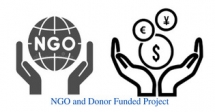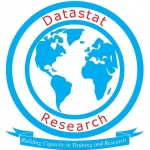|
|
Training Course on M & E, Data Management and Analysis in Food Security and Nutrition Programmes
USD 1,000 |
Venue: Nairobi, Kenya
The interest in information on the effect of approaches, projects and interventions on food and nutrition security is growing rapidly. The public sector, including the civil society and governments, frequently monitor data on food and nutrition in order to determine the existing trends and conditions, and the impact of interventions and policies.
International agencies, NGOs, governments and other agencies carry out monitoring, evaluation, and impact assessments regularly. With regard to this fact, this course lays emphasis on the need to carefully select the right set of indicators when designing information support systems at various administrative levels as well as the skills required for the analysis and interpretation of collected data.
The course adopts and interactive training approach and provides participants the chance to learn from each other as well as from the expert facilitators.
Who Should Attend
This course is relevant to managers, professionals, team members or consultants.
Duration: 5 days
Course Objectives
- Understand the role of food security and nutrition for attaining the MDGs
- Gain fresh insights on the values of participatory & learning-oriented design, monitoring, and evaluation about food security and nutrition.
- To strengthen your competence in designing an M&E-system
- Have clear ideas for the improvement of M&E systems and impact assessment for food security and nutrition.
Course Content
Introduction
- Food Security frameworks and concepts
M& E Fundamentals
- Data sources collection and use
- Defining a good M&E system
- Identifying the challenges that face Monitoring and evaluation in the Food Security and Nutrition sector
- Including M&E in food security program design
- M&E Frameworks
- M&E Plans
- Participatory M&E systems
M&E Frameworks
- Developing and operationalizing M&E frameworks
- Linking M&E frameworks to indicators
- M&E Frameworks basics for Food Security and other programs
- M&E in Food Security and Nutrition context
- Monitoring results and impacts using a logical framework
Gender M&E
- Exploring gender in M&E plans
- Gender considerations for data collection
- Introduction to M&E in Gender and Food Security
- Selecting indicators to measure gender-related outputs and outcomes
- Prioritizing gender in M&E plans
Step by Step approaches to M&E
- Agree on and design core documents to setup an M&E system
- Agree on field monitoring data collection and management process
- Agree on Monitoring data analysis process
- Agree on process for monitoring data utilization and reporting
- Agree on process of evaluation management
- Agree on the principles and purpose of the project M&E system
- Establish project M&E system
- Review and revise M&E plans based on progress
Interpreting and Communicating results for M&E
- Communication and reporting for M&E
- Contemporarily methods of dissemination
Data collection, management and data quality
- Data collection methods (quantitative and qualitative)
- Data collection versus data analysis
- Data quality and data management
- Data quality dimensions
- Double counting
- Functional areas of data management systems
- Increasing questionnaires response rates
- M&E field trips
ICT tools for data collection, monitoring and evaluation in food security and nutrition
- Case study
- Dashboards: data management analytics, and stakeholders access
- Data collection implementation models
- ICT tool for Data processing
- Key choice of application to collect data in rural areas
- Using Mobile phones for data collection
Data demand for food security and nutrition programs
- Data demand
- Data use frameworks and key concepts
- Information availability
- Information use
Introduction to Data analysis Food Security and Nutrition Programs
- Basic analysis
- Data analysis key concepts
- Introduction
- Types of variables
Summarizing data
- Graphs and charts for continuous variables
- Graphs and charts for dichotomous and categorical variables
- Graphs and charts for ordinal variables
- Numerical summaries for discrete variables
- Tables for categorical variables
- Tables for dichotomous variables
- Tables for ordinal variables
- Tabulations for summary statistics for continuous variables
Introduction to qualitative data Analysis
- Coding the data
- Introduction to qualitative data analysis software (NVivo)
- Organizing your data
- Planning for qualitative data analysis
- Reviewing the data
Quantitative data Analysis
- Basics for statistical analysis
- Choosing the correct statistical test
- Comparison of Data analysis packages
- Confidence intervals
- Hypothesis testing
- Hypothesis testing versus confidence intervals
- Interpreting the data
- Planning for qualitative data analysis
- Testing for normality of data
- Tests of statistical significance
Assessing Programme Impact on Food Security
- Impact Assessment in Programme Design
- Introduction to Impact Assessment
- Programme Design Implications
Methods and Approaches for Assessing Impact
- Overview of Methods and Approaches
- Qualitative Methods
- Quantitative Methods: Household Surveys
- Quantitative Methods: Secondary Data
- Selecting Methods and Approaches
Methodology
The instructor led trainings are delivered using a blended learning approach and comprises of presentations, guided sessions of practical exercise, web based tutorials and group work. Our facilitators are seasoned industry experts with years of experience, working as professional and trainers in these fields.
All facilitation and course materials will be offered in English. The participants should be reasonably proficient in English.
| Nairobi, Kenya | Nov 18 - 22 Nov, 2024 |
| USD 1,000.00 | |
Sammy Gathuru 0724527104
Related Courses
 Training Course on Grant Management using Infor Sun Accounting System
Training Course on Grant Management using Infor Sun Accounting SystemOn going
12 days, 06 - 17 Jan, 2025
Datastat Research Center
 2025 Alcohol and Drug Abuse Training - CALL FOR APPLICATIONS
2025 Alcohol and Drug Abuse Training - CALL FOR APPLICATIONS
5 days, 10 - 14 Feb, 2025
Datastat Research Center
 ICT For Disaster Response in Nairobi and Mombasa, Kenya
ICT For Disaster Response in Nairobi and Mombasa, Kenya
6 days, 26 - 31 Jan, 2025
Datastat Research Center
Currency Converter




